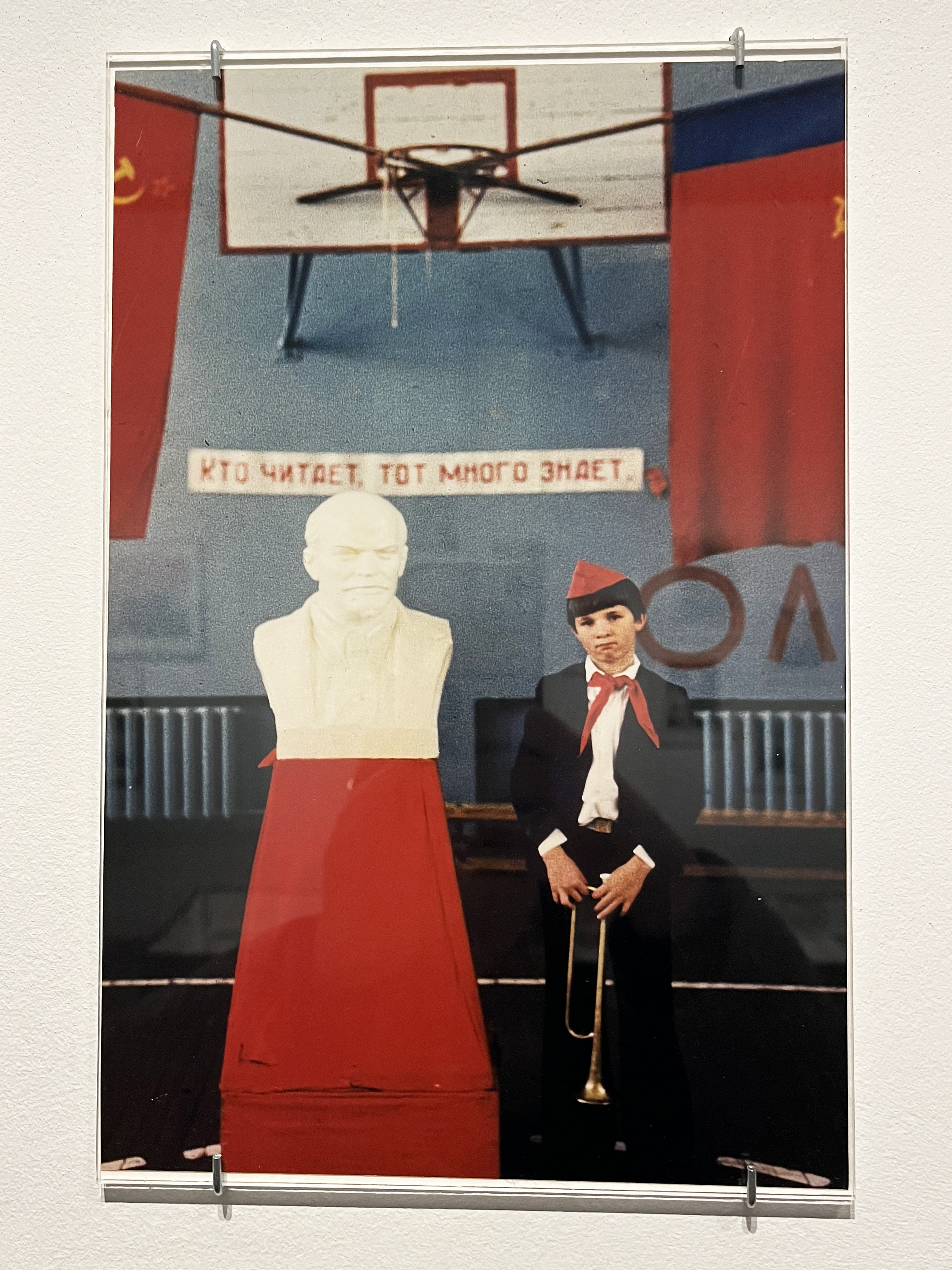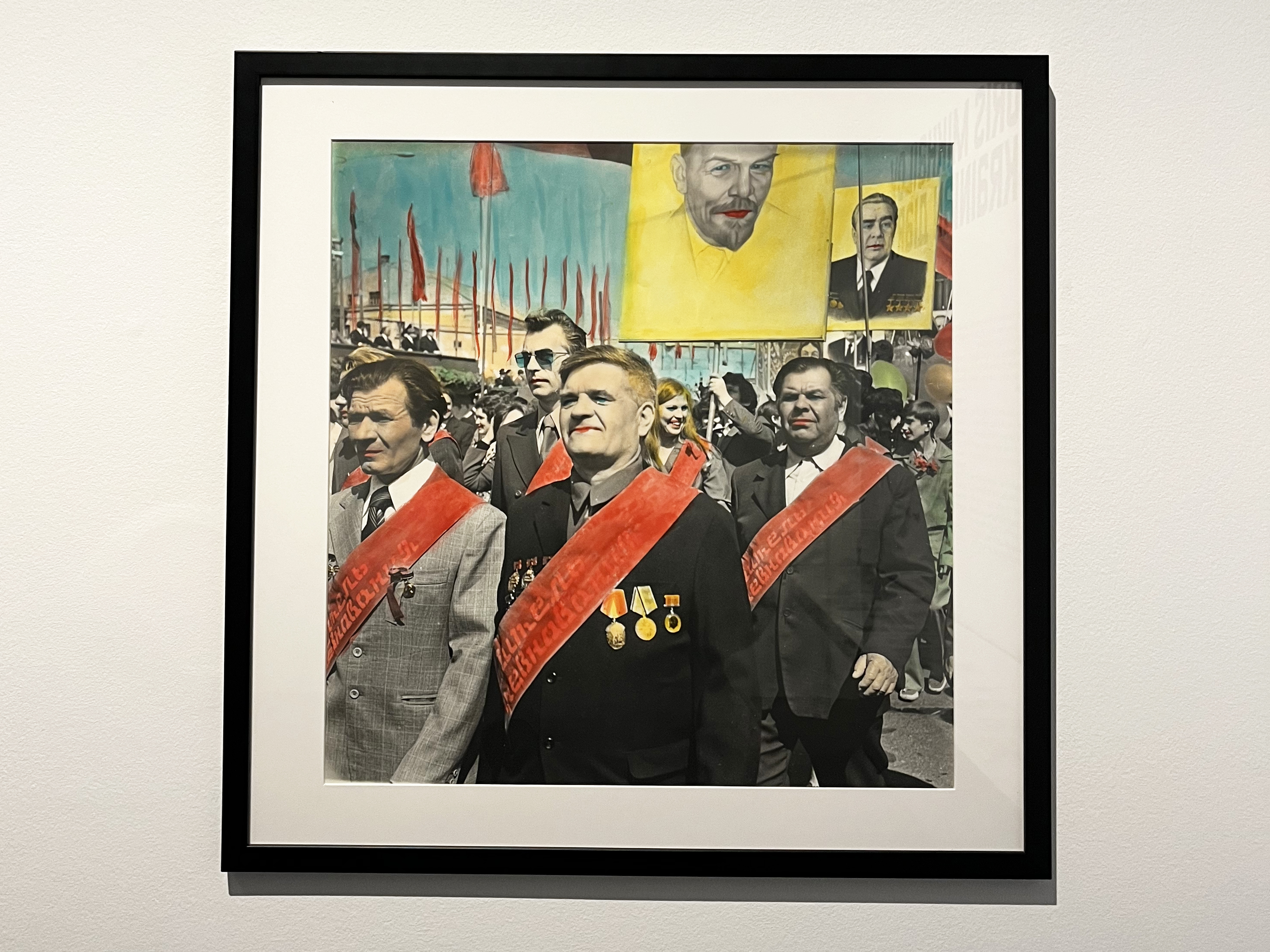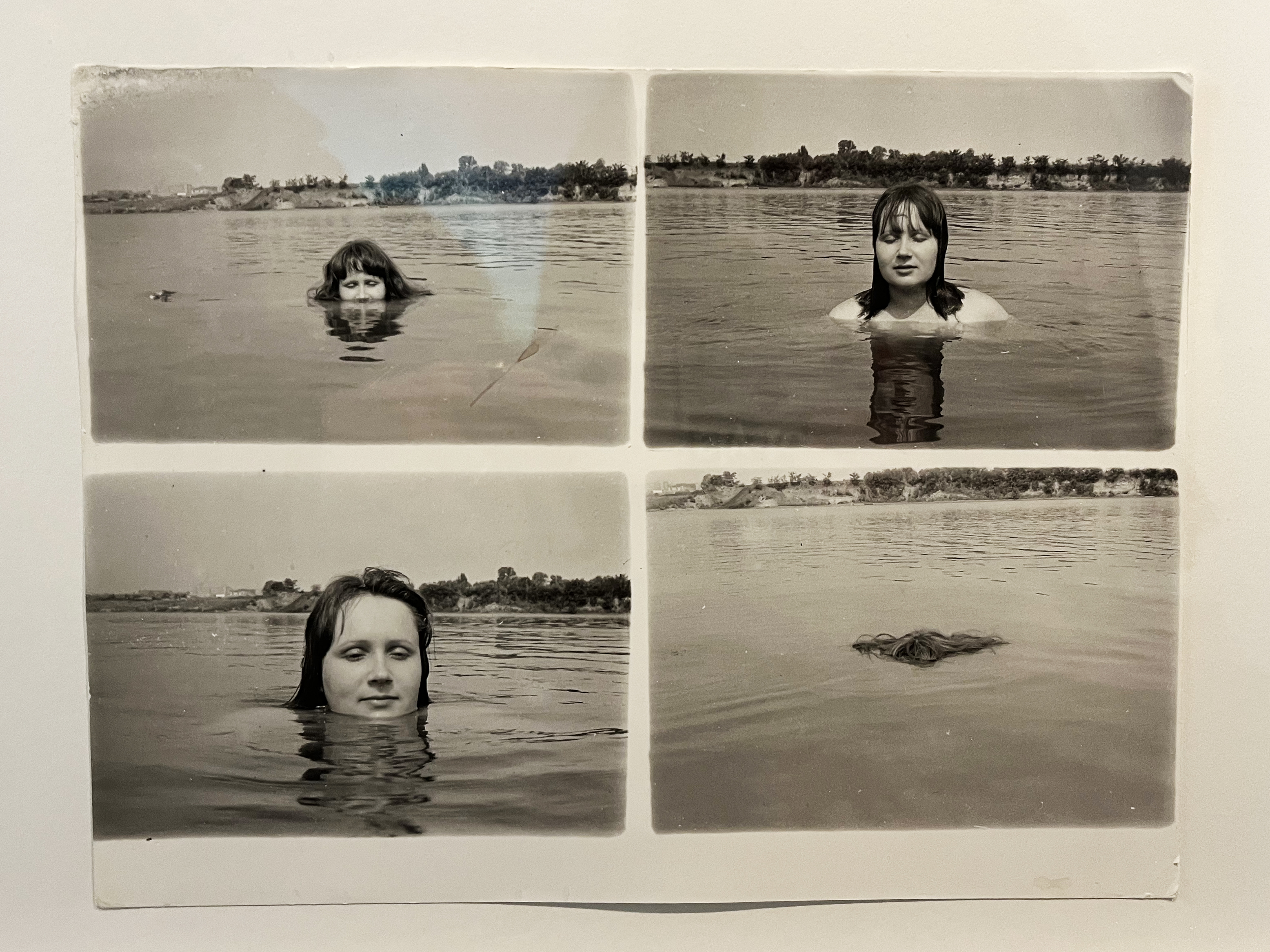
All photos of Boris Mikhailov’s Ukrainian Diary at the Photographer’s Gallery
by Sasha Mills.
A New (Old) Lens on Ukraine
Trying to understand my family through Boris Mikhailov’s Ukrainian Diary.
By Sasha Mills
11.25.2025
It’s a typically rainy autumn day in London, and I’ve taken a trip to the Photographer’s Gallery, five floors of exhibition-only space. I’m here to see the first major UK retrospective of his Ukrainian photographer Boris Mikhailov’s work, on show across a full two storeys of the gallery.
I am half-Ukrainian, on my mother’s side, and this heritage is an aspect of my identity that has become curiously foregrounded since Russia invaded the country in 2022. For most of my life, my friends didn’t even really know where Ukraine was, and suddenly, everybody started asking about it. It made me quite cynical for a while, that people would only be interested in somewhere with as unique and rich a history as Ukraine when it was the subject of an invasion.
This surge in interest also came precisely when I stopped being able to go back: while it’s possible to cross the border into Ukraine via Poland, direct flights have been suspended until 2027, and it simply doesn’t feel safe to return. The last time I visited Kyiv was in 2018, before I had started my undergraduate degree. It’s been seven years since I last returned. With every year that passes, I feel less and less Ukrainian and more and more British.
Boris Mikhailov has been photographing everyday life in Ukraine since he first taught himself how to use a camera in the 1960s. The exhibition takes a chronological organisation, opening with his series Red and satirical recolourings, and ending with his photographs of the Maidan Square Uprising from 2014. It’s an approach that works here, in a fairly limited space and with an audience who might not have a strong foundation in the history of this part of the Soviet Union.

Red is one of Mikhailov’s most well-known series. It has a simple conceit: photographs of everyday life in the Soviet Union, each containing a snippet of red. In most of these photographs, the “red” is a block color, often a piece of party signage or an item of clothing. In only a few of the images is this not the case: one that stands out is a nude photograph of a woman’s body pressed against a mesh hammock, the abrasion reddening her skin.
I spot a photograph depicting a group of girls in the forest wearing uniforms that I recognize as the Pioneers, the Communist equivalent of Scouts. The photo is eerily similar in composition to one that my Mum has in an album at home, although hers is in black and white. I’ve never been outside of Kyiv––which in my memory is defined by high-rise buildings and grand, gold-domed Orthodox churches––but Mikhailov’s show is populated with nature, particularly bodies of water and lakeside views, including the seaside at Crimea. When your geography of a place is so defined by a limited set of memories, it’s easy to forget what’s beyond your own horizons.

Some of these photos show Mikhailov and his friends putting on airs and graces in a seaside resort, and in others, they swim in a lake, a series of frames showing different moments of their heads bobbing in and out of the water. There’s a lot of nudity, but in a casual, unposed way. Mikhailov’s work is defined in part by this front-on approach to the body. This is particularly evident when on the second floor, where the series Case History is displayed. The series sees Mikhailov turn his lens to the homeless population of his native Kharkiv, exposing the dark underbelly of the supposed economic prosperity of post-Soviet Ukraine.
These photographs are the most uncomfortable on display: there’s none of the color and cheer of some of his earlier work. A large print on the far wall shows an unnamed pair looking straight down the barrel of the camera. The man, shirtless and crouched against the snow, has a tattoo of Lenin on his chest, an echo of the Lenins that populate the Red series in the floor above. Seeing the shape transferred from flags and banners to skin, it’s hard not to feel that Mikhailov is making a subtle comment on the state of post-Soviet Ukraine: even after the collapse of the USSR, history looms large.
Mikhailov’s risk-taking hasn’t been without consequence: after the KGB found his nude photographs of his wife, he lost his job as an engineer, a fact that was oddly omitted from the exhibition’s accompanying text. Perhaps it’s a point of soreness for Mikhailov, who was heavily involved in the show’s genesis, and whose words (often self-aggrandizing, if not without humour) pop up in labels throughout the rooms. This sense of risk is a point that the curation doesn’t fully convey: without any reference point for a more state-condoned version of Soviet photography, it’s easy to forget that documentary photography isn’t a right that’s always been granted.

Still, his sense of humour and satirical ability is undeniable. His brash playfulness is at its most prominent in a collection of nude self portraits, in which he is at points accompanied by a series of props including a gun, a wig, and a dildo. They’re silly and wonderful.
The problem with looking for yourself in art is that it’s not something that you can really make happen. When I think about the work that has formed who I am, it’s always been the work that’s taken me by surprise. While Mikhailov’s photography is undoubtedly brilliant, when I look at it, I’m peering into a time that I haven’t lived through and a set of places where I haven’t been. Even though I’ve been to Maidan Square, the subject of the most modern photographs on display, it’s more a faint outline in my mind than a place that feels reachable.
But my Mum has been to a lot of these places, and grew up in late Soviet Ukraine. So when I revisit the exhibition with her a week later, she has a context and language that feels like seeing the pictures in a new light. She can’t stop pointing out to me just how unusual this work is, that she can’t believe it was made when it was. We revisit a few of the labels, and land on a work where Mikhailov experimented with language to create narratives around a series of mundane scenes. My Mum’s background is as a translator, and I ask her to re-translate for me: the words, as it turns out, are a little less polite than the institutional translation on show.
Even though we never really talk about it, I can always feel how much my Mum misses Ukraine. She was a decade older than I am now when she moved to England with my Dad, and I’ve never really been able to fully comprehend what it must feel like to be removed from the context that shaped you. Trying to connect with Ukraine feels like a way to prove to her that I care. Seeing through her eyes is what I was looking for in this show, and while her view will always be out of reach, I can’t help but want to try.
